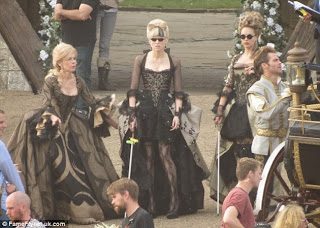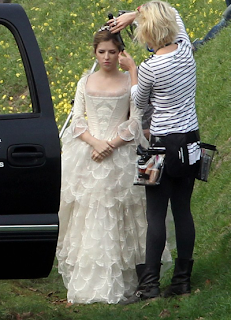 To me, Mickey
Mouse is an adorable, welcoming, iconic and wise figure that symbolizes
childhood merriment and the extravagance of Disney. Sometimes it’s easy to
forget, but he wasn’t always like that. In fact, Disney had a childhood.
To me, Mickey
Mouse is an adorable, welcoming, iconic and wise figure that symbolizes
childhood merriment and the extravagance of Disney. Sometimes it’s easy to
forget, but he wasn’t always like that. In fact, Disney had a childhood.
Created
in 1928, Mickey is now 85 years old, and apparently his wisdom has come with
age. As Robert W. Brockway explains in his essay “The Masks of Mickey Mouse:
Symbol of a Generation,” Mickey was once like a bratty kid, kicking and lying
and playing pranks. As the generations aged, however, so did this child. It is
interesting to think that Mickey has not always been as we know him now. Further,
his personality wasn’t the only thing to change.
 Mickey
over the years has become rounder and gained white gloves and wider eyes, among
other things. His transformation has been analyzed by many including Brockway,
who thinks that the use circles and more rounded features “always points to the
single most vital aspect of life—its ultimate wholeness” (31). Additionally, circles
are safe whereas “we have bad experiences with sharp points, with angles…” (Brockway
32). As Mickey got rounder he became softer and easier to love, a better
representative for the Disney company.
Mickey
over the years has become rounder and gained white gloves and wider eyes, among
other things. His transformation has been analyzed by many including Brockway,
who thinks that the use circles and more rounded features “always points to the
single most vital aspect of life—its ultimate wholeness” (31). Additionally, circles
are safe whereas “we have bad experiences with sharp points, with angles…” (Brockway
32). As Mickey got rounder he became softer and easier to love, a better
representative for the Disney company.
Today
it is hard to find someone who doesn’t have some relation to Disney, whether
because they have watched a film, visited a theme park, or even seen a
television show on any of the television stations owned by the company. Many
believe the Disney juggernaut is so incredibly powerful, with so many assets
and connections, that its impression on society is exceedingly greater than
people realize. Some even think its power and amount of support is frightening.
Mickey Mouse is instrumental to this success; his image is specially designed
for Disney’s audience—the world—to make him, and therefore the company,
lovable. The transformation of Mickey has come about all to make him more
endearing and enchanting; his entire appearance and all of his actions are
carefully thought out and planned since he is the representative, the mascot
for one of the mightiest organizations in the world.
He is so
much more than a mouse.













